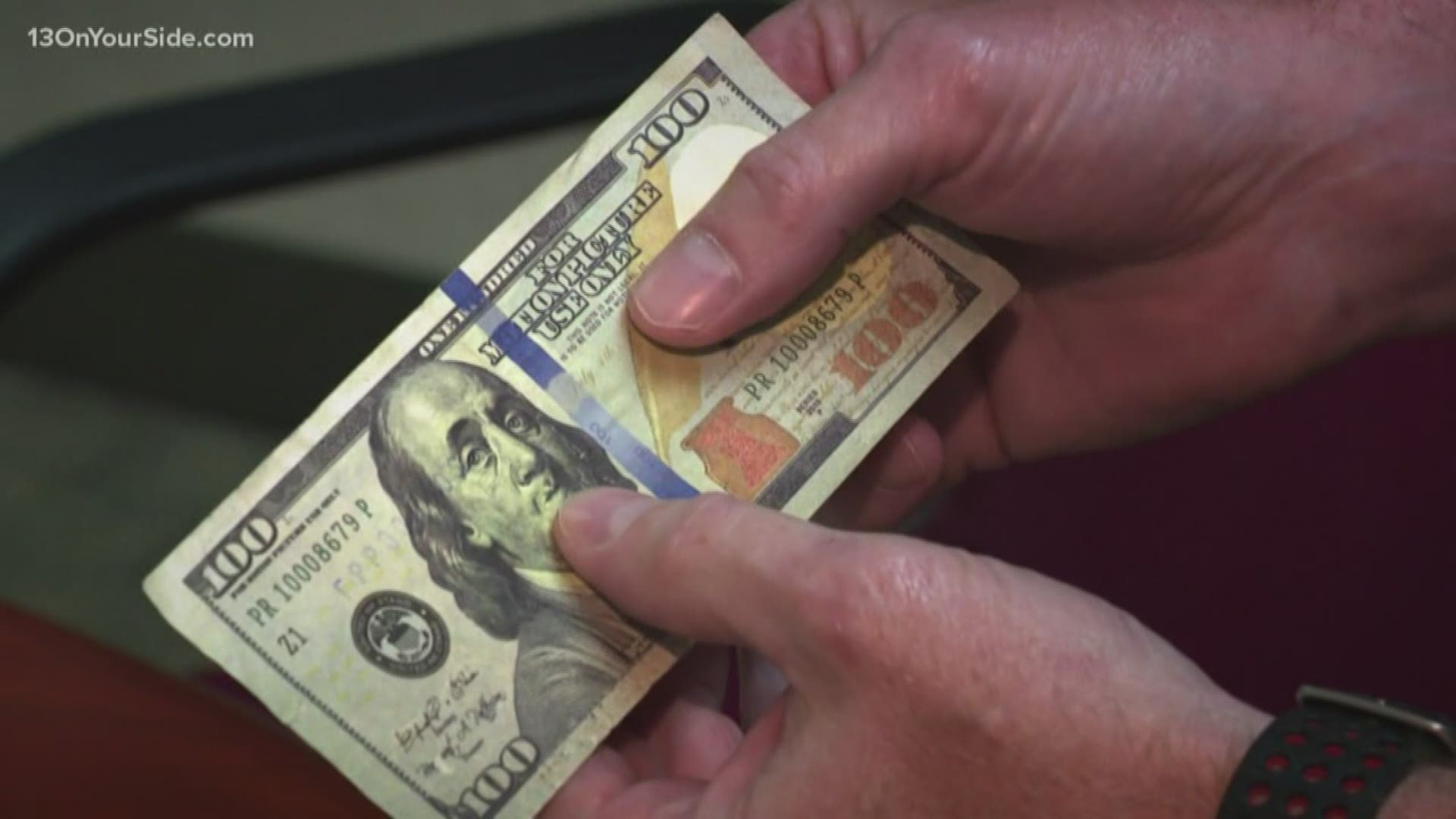GRAND RAPIDS, Mich. — The U.S. Secret Service said there has been a "surge" of fake currency reports in the West Michigan area over the course of one year.
Resident Agent in Charge, Steven McMahon, said it's not just the number or reports changing, con artists' game plans have also evolved.
"The other surge that we've also seen are notes that are considered 'bleached notes'. So that's genuine paper that's been bleached chemically and has been reprinted with the face of typically a $100 bill on it," he explained.
The $20 bill is the most common bill imitated domestically, according to McMahon. Worldwide, the $100 bill is most popular, but he said it's also on the rise in the U.S.
Counterfeit scams are most commonly pulled at cash-accepting businesses like fast food or retail shops. While the con doesn't discriminate, it's happens more heavily over the holidays.
"You have a lot of people standing in line, so there's the element of trying to move the transaction along a little faster, so sometimes there's a reluctance to look at all the security features," McMahon said.
It's also common for scammers to select a low-price item and pay with a higher-value bill, to maximize the number of real currency they get in return as change.
"$100 loss to a small business in Holland or in Niles Michigan has a tremendous impact on the business itself," McMahon explained.
While Secret Service statistics say less than one-hundredth of one percent of money is counterfeit in the world, it doesn't stop millions of fake dollars from being passed across the U.S. each year.
The two main ways to test for a valid bill, according to McMahon
- The watermark
- color-shifting ink
Real bills with the value of five or higher will have a watermark with its corresponding figure in the right-hand corner.
While so scammers may bleach a real $10 bill and re-print it as a $100, the watermark would still show Alexander Hamilton ($10 bill), rather than Benjamin Franklin ($100 bill).
Color-shifting ink is another tell-tale sign of a true dollar.
Depending on the bill's value, it will either shift from green to black ($20) or copper to green ($100) when it is tilted up and down in the light.
McMahon said some scammers use small tricks like a gold-glitter pen to mimic the look of color-shifting ink, but when tilted it won't give off the same color change.
One of the most obvious ways to spot a prop money is to look at the bill's surface.
Money used in movies or plays will have the writing "For major motion pictures only" written across the top.
Those with time to spare could invest in a magnifying glass or use their smart phone's camera zoom to search for other security features, like fibers and micro printing, but McMahon said the easiest ways to spot fake currency is testing for the water mark and color-shifting ink.
Counterfeit circulates as soon as it leaves the owner's hand.
McMahon said it's important to contact the police as soon as one comes into contact with fake currency, even if they unintentionally received it through circulation.
►Make it easy to keep up to date with more stories like this. Download the 13 ON YOUR SIDE app now.
Have a news tip? Email news@13onyourside.com, visit our Facebook page or Twitter.

